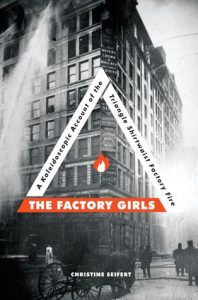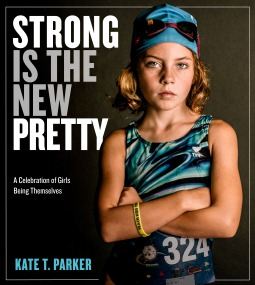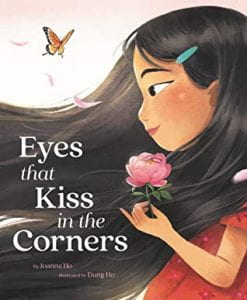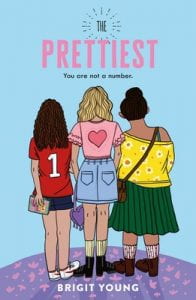
Atkins, Laura and Stan Yogi. Fred Korematsu Speaks Up. Ill. Yukota Houlette. Heyday Books, 2017. 978-159714-3684. $18.00. 103 pp. Gr. 5-12.
Born in 1919, Toyosaburo Korematsu was the third of four sons born to his parents, immigrants to America from Japan. He took the name “Fred” from a first grade schoolteacher who could not pronounce his name. The Japanese immigrants (Issei) and their children (Nisei) faced discrimination which exploded following the 1941 Japanese bombing of Pearl Harbor. All Issei and Nisei were forced from their homes and their lives into “ ‘Assembly Centers.’ Really prisons.” (26). When Fred’s family was relocated, Fred had a strong sense of his own rights of citizenship and decided to leave California rather than report to the prison camp (26). He was soon arrested and sent to the camp with his parents. In this camp, he found no support, for the others worried how Fred’s rebellion would affect the rest of them. ACLU lawyer Ernest Besig believed in Fred’s case and agreed to represent him for free. Fred waited, through limited job and living opportunities, for the case to go to trial. In 1944, the Supreme Court ruled 6-3 against Fred, basing their decision on the military’s assertion that Japanese relocation was a “military necessity” (58). Years went by. Fred married, had two children, and only explained his story to his children when his daughter learned about it in school. In 1982, professor Peter Irons approached Fred with evidence that the government’s lawyers had lied to the Supreme Court, and in 1983, Fred’s case was reopened. This time, Fred was cleared of charges and hailed as a hero. Fred’s daughter leads the Fred T. Korematsu Institute and is fighting for January 30 (Fred’s birthday) to be named a national holiday known as “Fred Korematsu Day.” The book ends with ideas for how to speak up for your rights, source notes, bibliography, index. THOUGHTS: A strong pairing of verse history and illustrations which highlight key moments in Fred’s life, interspersed with helpful 2-4 pages spreads on the camps, the court decisions, and more. This would pair well with World War II history, civil rights cases, and modern day heroes.
341.6; Japanese-American Internment; US Supreme Court Melissa Scott, Shenango Area SD

Seifert, Christine. The Factory Girls: A Kaleidoscopic Account of the Triangle Shirtwaist Factory Fire. Zest Books, 2017. 978-1942186-458. $14.99. 176 pp. Gr. 7-12.
It’s 1911 in New York City, quitting time on this Saturday evening. Imagine a fire starting on the 8th floor of a building. Imagine 500 people in that building with one elevator, one rickety fire escape that stops at the 2nd floor, and one exit blocked by a locked door. Some got out; 146 did not. For many, it was a choice of jump or face the flames. The horrors of that day left many scarred for life and incited many to work for change in workers’ safety regulations. Seifert begins her investigation by describing “Five Brave Girls” who worked at the Triangle Shirtwaist Factory and who were there the day of the fire: 16-year-old, American-born Annie Miller; 19-year-old, Russian immigrant Bessie Gabrilowich; 17-year-old, Austrian-born Rose Rosenfeld; 21-year-old Fannie Lansner, alone without her Russian family; and 14-year-old, Italian-American Kate Leone in her first month on the job. Seifert waits to tell us their individual fates from March 25, 1911, and in between, showcases the history of American industry and birth of advertising amid the pressure of immigration and millions struggling to work and survive in a place and with a language wholly new to them. The Gilded Age brought opportunity and socio-economic pressure to every group, leading to exploitation, excess, and greed. Seifert explores the era that saw such tremendous change in fashion, community, wealth distribution, and industry. She discusses the corrupt politics of Tammany Hall and the workers’ courageous fights for unionization, and how the fire became a turning point in changing public perception and passing safety laws. Seifert wisely adds a chapter devoted to the current state of factory workers worldwide, and what the reader can do to affect change in the world. THOUGHTS: A thorough look at an event that changed a nation. Highly recommended for grades 7-12.
974.7 American History; Workers Rights; 1900s Melissa Scott, Shenango Area SD

Parker, Kate T. Strong is the New Pretty: A Celebration of Girls Being Themselves. Workman Publishing, 2017. 978-15235-00680. $30.00. 250 pp. Gr. 3 and up.
This book came from Parker’s work as a photographer and mother, noticing her daughters’ strengths were their beauty, and so began a blog, then this book, of 200 girls being…themselves. Parker divides the photos into nine categories, highlighting that Confidence, Wild, Resilient, Creative, Determined, Kind, Fearless, Joyful, and Independent….is Strong. Many individual photographs are powerful, showing individual girls or teammates, before, during, after games and performances and simple days. Zari, age 11, with tennis racket, says “I am blessed with gifts and talents and can’t wait to show the world” (21). Alice, age 7, says “I have a little bit of a temper” (43). Natalie, age 15, says, “Last year I chose to move to a different lunch table instead of being ignored by people who I thought were my friends” (87). Parker, age 10, says, “I give it my all, always, even when nobody is watching. My mom says that is what integrity is all about” (116). Not every photograph or quote hits its mark, and some captions seem cliche (“I am fearless”), but the overall effect of seeing girls at their proudest is encouraging. THOUGHTS: A wonderful book to share, browse, and contemplate, for girls ages 3-103.
779; Photography Melissa Scott, Shenango Area SD

Braun, Eric. Escape From Alcatraz: The Mystery of the Three Men Who Escaped From the Rock. Capstone Press, 2017. 978-15157-45525 (paper) $7.95 112 pp. Gr. 4-8.
Known as “The Rock” for its rock-like island appearance just outside of San Francisco, Alcatraz was once home to only the worst criminals. From the 1930s to 1967, Alcatraz held prisoners, and it held secrets. Some attempted escape, but the cold waters surrounding the island, and the minimum of 2.5 miles to swim to the California shore, always defeated the escapees. Could it be done? In 1962, three men did escape from Alcatraz: Frank Morris, the mastermind, and brothers John and Clarence Anglin. In what Braun reveals was an elaborate plan taking months of effort, the men created dummy-heads to fool the guards at roll call, dug through semi-concrete walls with improvised tools (like spoons), created rafts from raincoats, studied Spanish, and much more. They escaped, but whether they lived is a matter of debate. Relatives of the Anglin brothers maintain the men survived and made it to Mexico then Brazil. No bodies have ever been found, and the case is certainly unsolved. This book gives many details about the men, their plan, life on Alcatraz, and what may have happened after that night. THOUGHTS: At a short 112 pages, with plenty of photographs of the men, their equipment, and the prison, this is a winner for reluctant readers.
365; Crime Melissa Scott, Shenango Area SD
 Vere, Ed. The Artist. Doubleday Books for Young Readers, 2023. 978-0-525-58087-4. Unpaged. $18.99. Grades K-2.
Vere, Ed. The Artist. Doubleday Books for Young Readers, 2023. 978-0-525-58087-4. Unpaged. $18.99. Grades K-2. 





